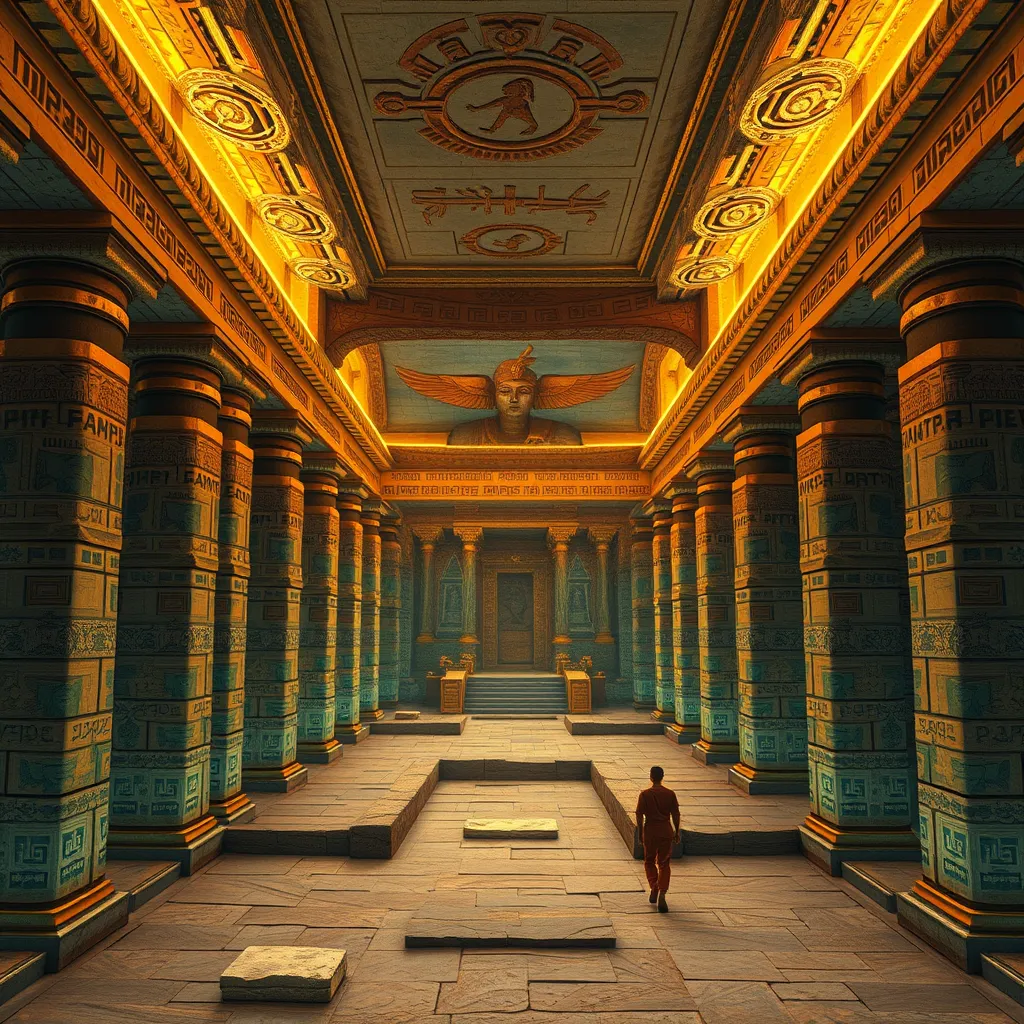The Duat: A Labyrinth of Trials and Triumphs
I. Introduction to the Duat
The Duat, often referred to as the Egyptian underworld, is a pivotal component of ancient Egyptian mythology. It serves as a complex spiritual realm where the souls of the deceased embark on a transformative journey. The Duat is not merely a place of darkness and despair; rather, it is a labyrinth of trials and triumphs, reflecting the ancient Egyptians’ intricate beliefs about death and the afterlife.
In ancient Egyptian culture, the concept of the afterlife was of paramount importance. It was believed that life did not end with physical death, but instead transitioned into a new existence where the soul would face challenges that determined its fate. This article aims to explore the trials and triumphs within the Duat, shedding light on its significance in the context of ancient Egyptian spirituality.
II. Historical Context of the Duat
The origins of the belief in the Duat can be traced back to the early dynastic periods of ancient Egypt. As the civilization evolved, so did the understanding of the afterlife, with the Duat becoming a critical element in funerary practices and beliefs.
Key texts, such as the Book of the Dead, detail the journey through the Duat. These texts served both as guides for the deceased and as reflections of the values that ancient Egyptians held dear. The Duat encapsulates the duality of existence—light and darkness, life and death—mirroring the Egyptians’ reverence for balance and harmony.
III. The Structure of the Duat
The landscape of the Duat is vast and varied, characterized by a series of realms that the soul must navigate. These realms include:
- The Field of Reeds (Aaru): A paradise where the righteous enjoy eternal peace.
- The Hall of Ma’at: The area where the Weighing of the Heart takes place.
- The Lake of Fire: A place of punishment for the wicked.
Key figures in the Duat include Osiris, the god of the afterlife, and Anubis, the god of mummification and the protector of graves. These deities guide and judge the souls, embodying the complexities of life, death, and rebirth.
The symbolism of different areas within the Duat is profound. For instance:
- The Weighing of the Heart symbolizes justice and truth.
- The Field of Reeds represents fulfillment and eternal life.
- The Lake of Fire serves as a deterrent against immorality and evil deeds.
IV. Trials Faced in the Duat
The journey through the Duat is fraught with challenges that test the soul’s worthiness. One of the most significant trials is the Weighing of the Heart, where the heart of the deceased is weighed against the feather of Ma’at, the goddess of truth and justice.
Key trials include:
- Confrontation with monstrous beings, such as Ammit, who devours the hearts of the unworthy.
- The navigation through perilous landscapes filled with traps and illusions.
- Encounters with various gods who assess the soul’s deeds during its lifetime.
These challenges serve not only as tests but also as metaphors for moral integrity and the choices made during life. The presence of monsters and guardians in the Duat emphasizes the importance of courage and wisdom in overcoming adversity.
V. Triumphs in the Duat
Successfully navigating the Duat is of immense significance. Those who pass the trials are granted the rewards of eternal life and peace. The triumph over the challenges reflects the soul’s purity and adherence to Ma’at.
The rewards for the righteous include:
- Access to the Field of Reeds, a utopian afterlife.
- Union with Osiris, becoming one with the divine.
- The opportunity for rebirth and renewal in the cycle of life.
Notable figures who triumphed in the Duat include Osiris himself, who rose from the dead, and various pharaohs who were believed to achieve immortality through their successful navigation of the afterlife. Their stories serve as inspirations for the living, reinforcing the belief in justice and reward.
VI. The Duat in Egyptian Art and Literature
The Duat has been depicted extensively in ancient Egyptian art, found in tombs and temples. These artistic representations often illustrate the trials faced in the Duat, providing a visual narrative of the afterlife journey.
Literary depictions in texts like the Book of the Dead offer insights into the beliefs and practices surrounding death. These texts were often inscribed on tomb walls and papyrus scrolls, serving as guides for the deceased.
The interplay between art and literature not only shaped perceptions of the Duat but also reinforced the cultural significance of the afterlife in ancient Egyptian society. Together, they create a rich tapestry that honors the complexities of existence.
VII. The Legacy of the Duat in Modern Culture
The influence of the Duat extends beyond ancient Egypt into contemporary culture. Its themes resonate in literature, film, and art, often serving as a metaphor for personal transformation and the struggle between good and evil.
There has been a revival of interest in ancient Egyptian mythology, with modern works exploring the mysteries of the Duat. This resurgence highlights the timeless nature of its themes and the universal quest for understanding life and death.
Additionally, the Duat has found a place in spiritual and esoteric practices today, where it is often referenced in discussions about the afterlife, reincarnation, and the soul’s journey.
VIII. Conclusion
In summary, the Duat holds immense significance within the framework of ancient Egyptian beliefs, embodying the trials and triumphs that define the journey of the soul. It reflects the culture’s understanding of morality, justice, and the afterlife.
As we reflect on the enduring impact of the Duat, we recognize its profound relevance in our understanding of life, death, and what lies beyond. The legacy of the Duat continues to inspire modern spirituality and mythology, reminding us of the universal questions that transcend time and culture.




